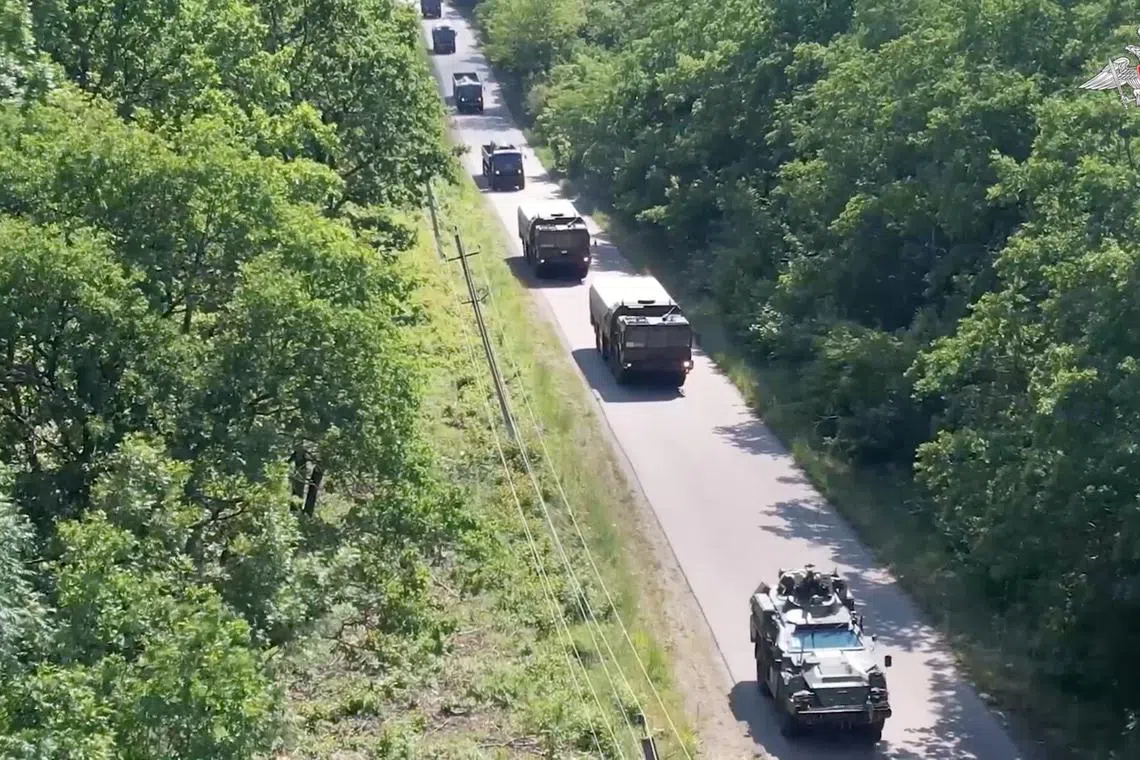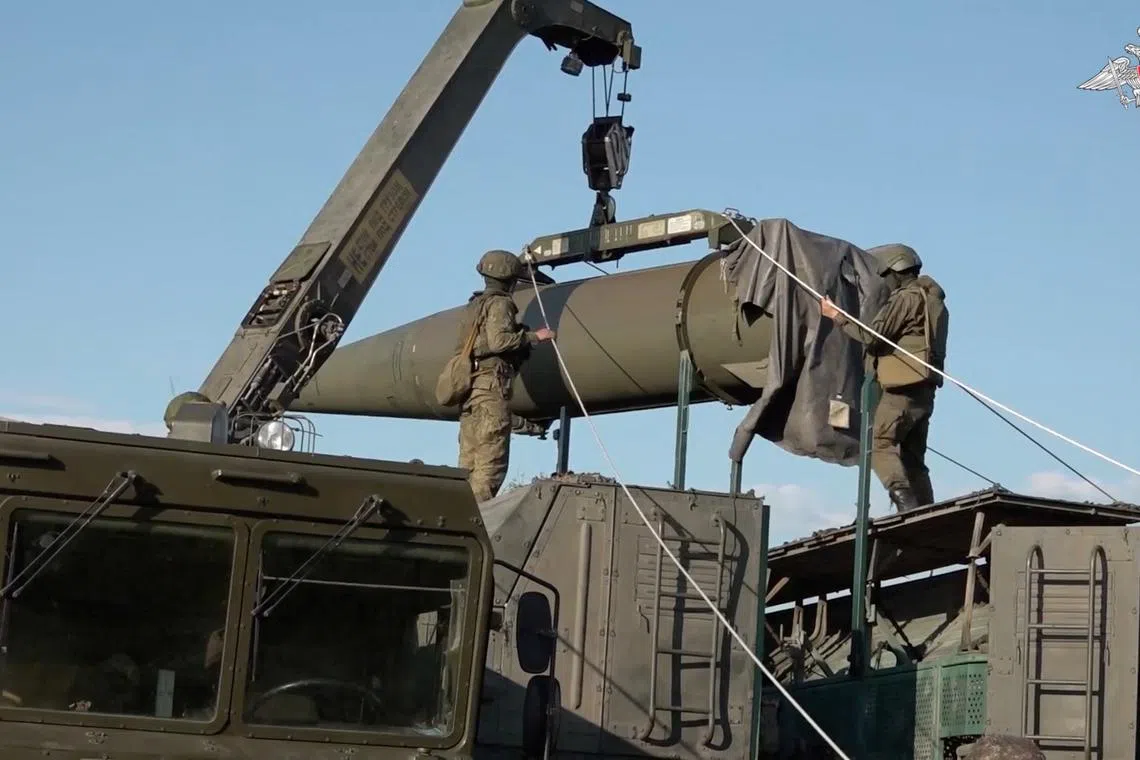Russia starts exercise to simulate launch of tactical nuclear weapons
Sign up now: Get ST's newsletters delivered to your inbox

Russian military vehicles are seen during the first stage of drills at an unknown location in Russia’s Southern Military District, taken from a video released on May 21.
PHOTO: REUTERS
Follow topic:
MOSCOW – Russian forces have started the first stage of exercises ordered by President Vladimir Putin to simulate preparation for the launch of tactical nuclear weapons, the Defence Ministry said on May 21.
Moscow has linked the exercises to what it calls “militant statements” by Western officials, including French President Emmanuel Macron, which it said created security threats for Russia.
Nuclear analysts say the exercises are designed as a warning signal by Mr Putin to deter the West
Russia’s Defence Ministry said the first stage of the exercise involved Iskander and Kinzhal missiles.
It is aimed at ensuring that units and equipment are ready for “the combat use of non-strategic nuclear weapons to respond and unconditionally ensure the territorial integrity and sovereignty of the Russian state in response to provocative statements and threats of individual Western officials against the Russian Federation”, the ministry said.
The drills involve missile forces in Russia’s Southern Military District, which lies adjacent to Ukraine and also includes parts of Ukraine that Russia now controls.
Belarus, where Russia said in 2023 it was deploying tactical nuclear weapons, will also be involved, the two countries have said.
Tactical, or non-strategic, nuclear weapons are less powerful than the strategic arms designed to wipe out whole enemy cities, but they nevertheless have vast destructive potential.
Some Western analysts believe that non-strategic nuclear weapons have acquired greater importance in Moscow’s thinking since the start of the war in Ukraine, where its conventional forces struggled in the first two years.
In theory, the use of such a weapon could deliver a stunning shock to the West without necessarily triggering a full-blown nuclear war, though the risk of triggering a cycle of escalation would be huge.
Special ammunition
Russia has about 1,558 non-strategic nuclear warheads, according to the Federation of American Scientists, although there is uncertainty about exact figures. They are controlled by the Russian Defence Ministry’s 12th Main Directorate, known as 12th Gumo.
The ministry said troops were practising obtaining “special ammunition” – meaning nuclear warheads – for Iskander missiles, equipping launch vehicles with them and “covertly advancing to the designated position in preparation for missile launches”.
It said aviation units were also practising the fitting of special warheads to Kinzhal hypersonic missiles, and flying into designated patrol areas.

Russian service members taking part in the first stage of military drills at an unknown location in Russia’s Southern Military District, in this still image taken from video released on May 21.
PHOTO: REUTERS
Video released by the ministry shows missiles being transported in a convoy of military vehicles and placed in position ready for firing.
“The exercises are, obviously, a signal in response to discussion of Nato countries’ troops in Ukraine. The most important features are advance announcement and visibility,” Dr Nikolai Sokov, a former Soviet and Russian arms control official, told Reuters.
Western militaries will be watching the exercises closely and seeking to draw conclusions about how much warning time they would have if Russia deployed such weapons for real, he said.
“The involvement of 12th Gumo can produce insights into how much time the release of warheads takes, how well detectable, how much warning,” said Dr Sokov, a senior fellow at the Vienna Centre for Disarmament and Non-Proliferation.
The involvement of the Kinzhal, he said, was “a new element I did not expect to see”, although there was no doubt about its capability to carry both nuclear and conventional warheads.
When Mr Putin ordered the drills in May, Russia’s Foreign Ministry linked them to comments by Mr Macron, who floated the possibility of sending European troops to fight Moscow in Ukraine, and British Foreign Secretary David Cameron, who said Kyiv had the right to use weapons provided by the UK to strike targets inside Russia.
It also cited the provision of long-range British, French and US ATACMS missiles to Kyiv.
Russia’s Foreign Ministry said on May 6 that the exercises should send a “sobering signal” to the West and its “puppets” in Ukraine.
“We hope these drills will cool the hot heads in Western capitals,” it said, adding that the West should realise “the potential catastrophic consequences of the strategic risks they are generating” and stop short of direct military confrontation with Russia. REUTERS

